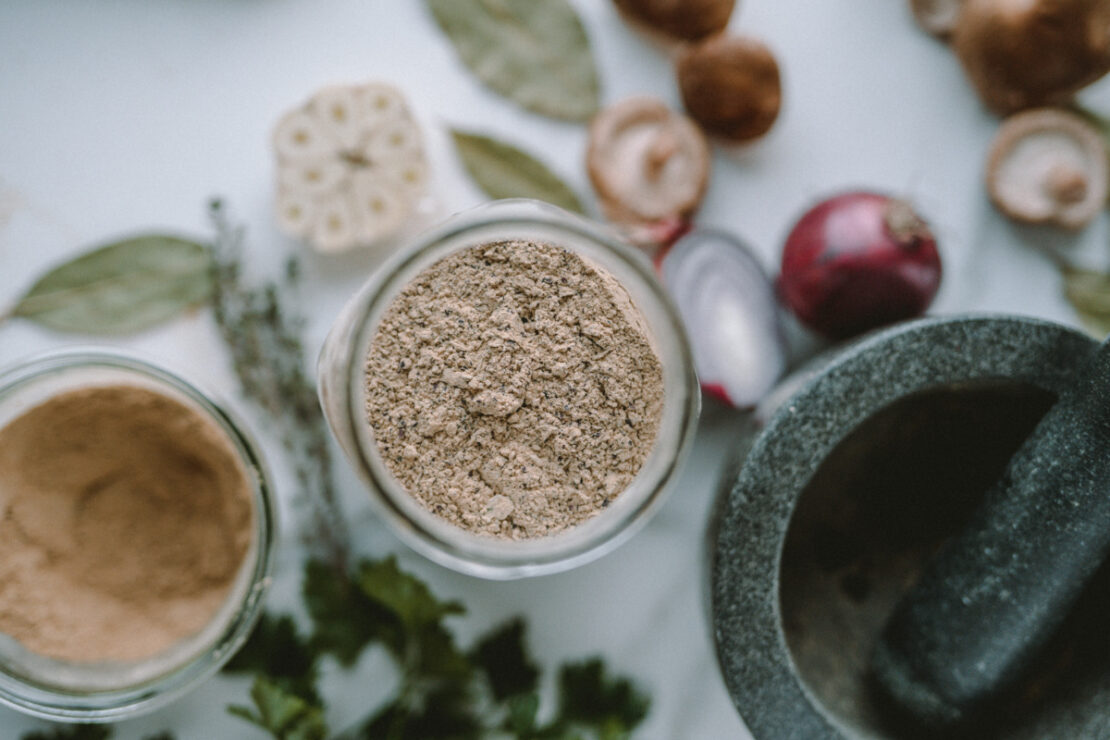
Nourishing Herbal Soup Seasoning Mix
A healthy immune system serves as your personal smooth-running militia, with the number one goal of protecting your body from pathogenic invaders.
Especially these days, it’s so important to build a stronger immunity and there is a lot you can do so that it can work effectively when you need it.
On a cold winter day, a comforting soup or stew is just the perfect meal to recharge and warm up. By combining different nutritive, adaptogenic, tonic, immune-enhancing herbs and mushrooms into a soup seasoning blend, you can easily boost your soups, stews, and sauces with a tablespoon or two whenever you want an extra-nourishing kick!
Certain herbs bridge the gap between diet and dietary supplements, providing concentrated nutrition in a whole-foods-package or aid you with beneficial substances for immunity support!
In this article, I break down some benefits of certain beneficial herbs that support your health and wellbeing throughout the cold season and share a recipe for your own soup seasoning mix. Before you know it, this blend will become a new staple in your kitchen!
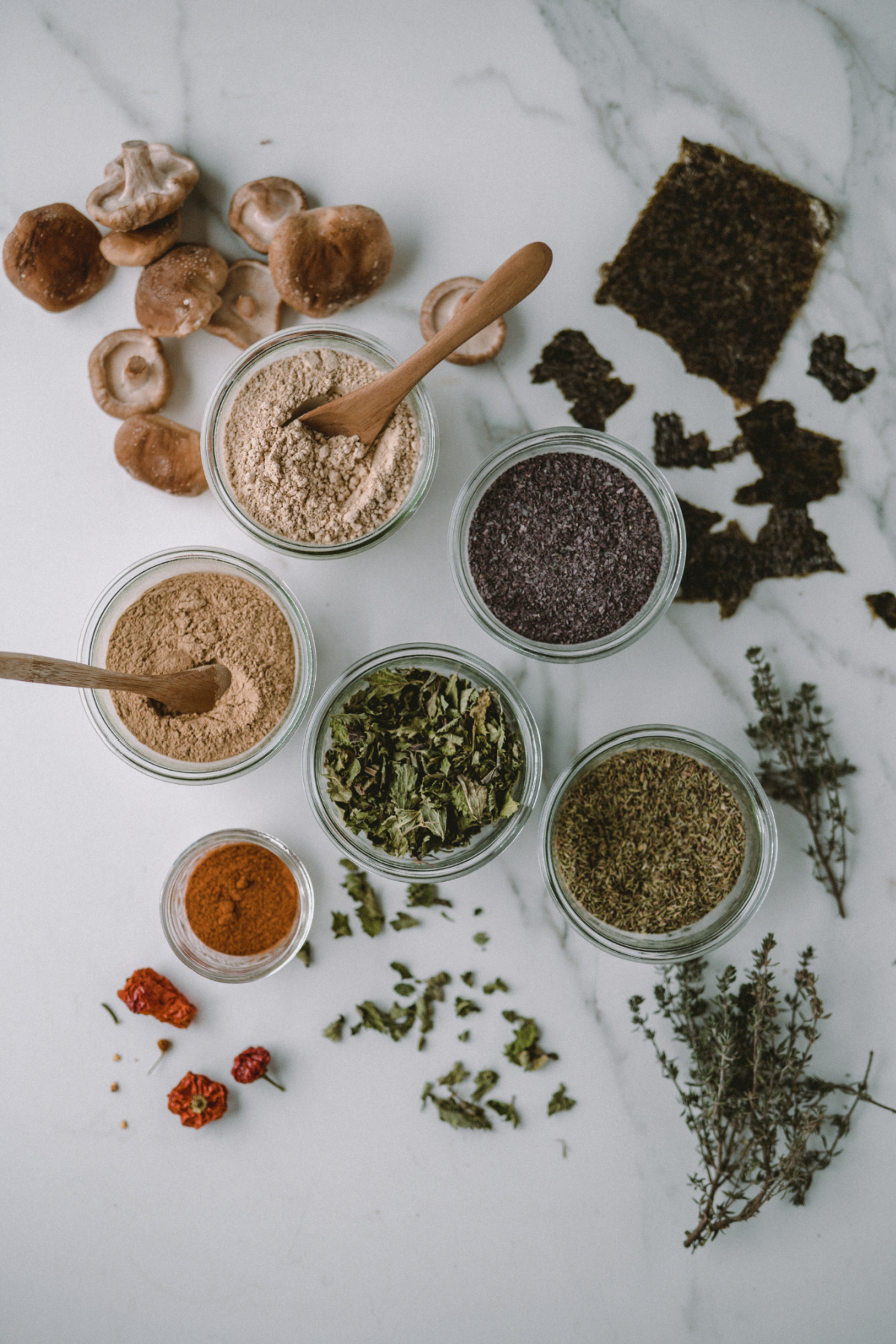
Choosing Ingredients For a Powerful Herbal Broth
With the following ingredients, we create a mineral-rich soup seasoning blend with immunity-supporting and cold and flu soothing powers. Feel free to adjust and switch certain herbs from each group according to your personal preferences!
Nutritive Herbs
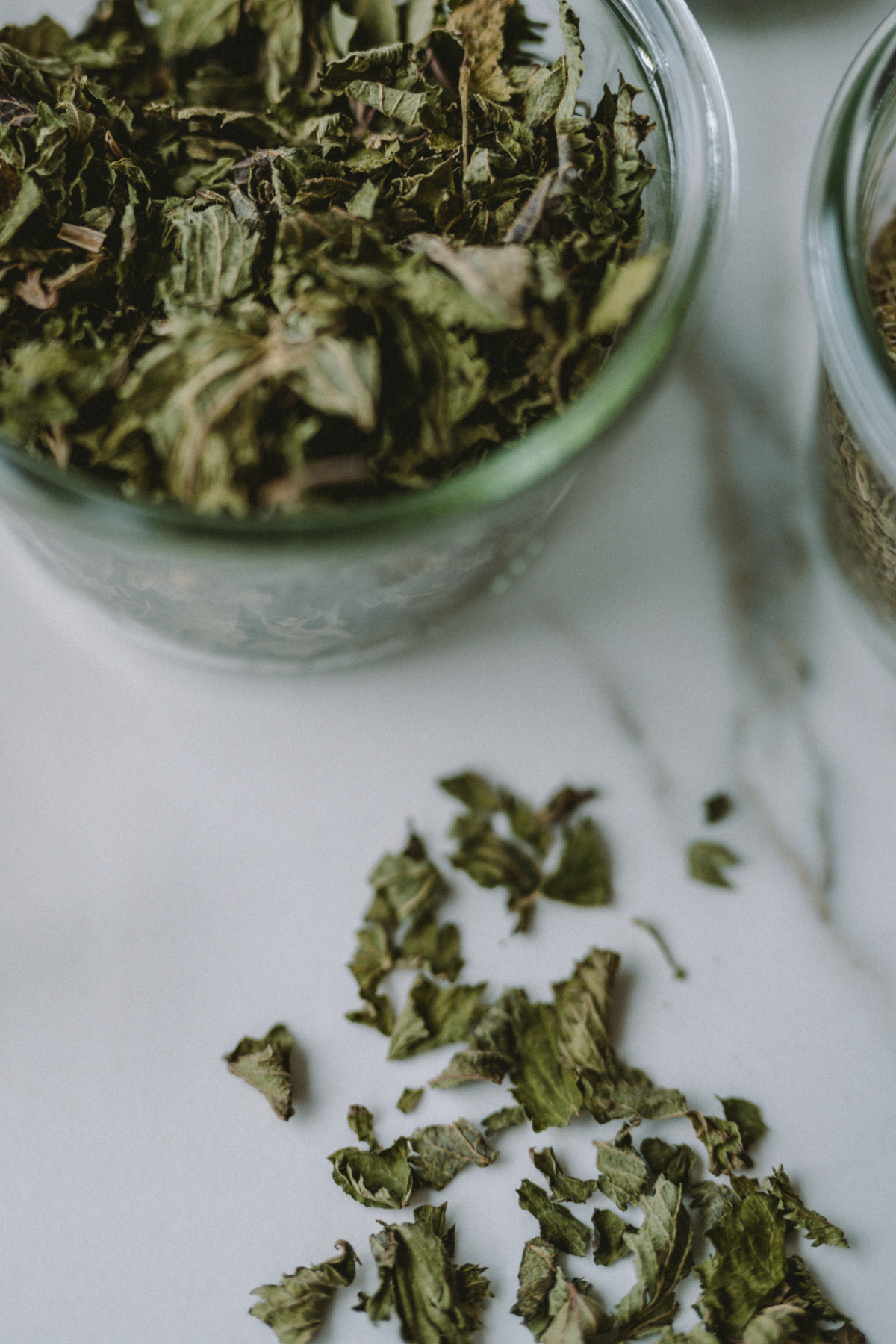
Nettle (Urtica dioica)
Nettle nourishes, supports, and energizes the whole body, and is richly nourishing to the blood. Its nourishing and medicinal action is attributed to the rich vitamin, mineral, amino acid, and chlorophyll content, as well as formic acid.
It contains abundant calcium, magnesium, silica, iron (Pedersen, 2012) and vitamins A, C, E, and K (Bennett, 2014), as well as several other minerals.
The high mineral and chlorophyll content gives nettles a salty, swampy taste slightly reminiscent of seaweed.
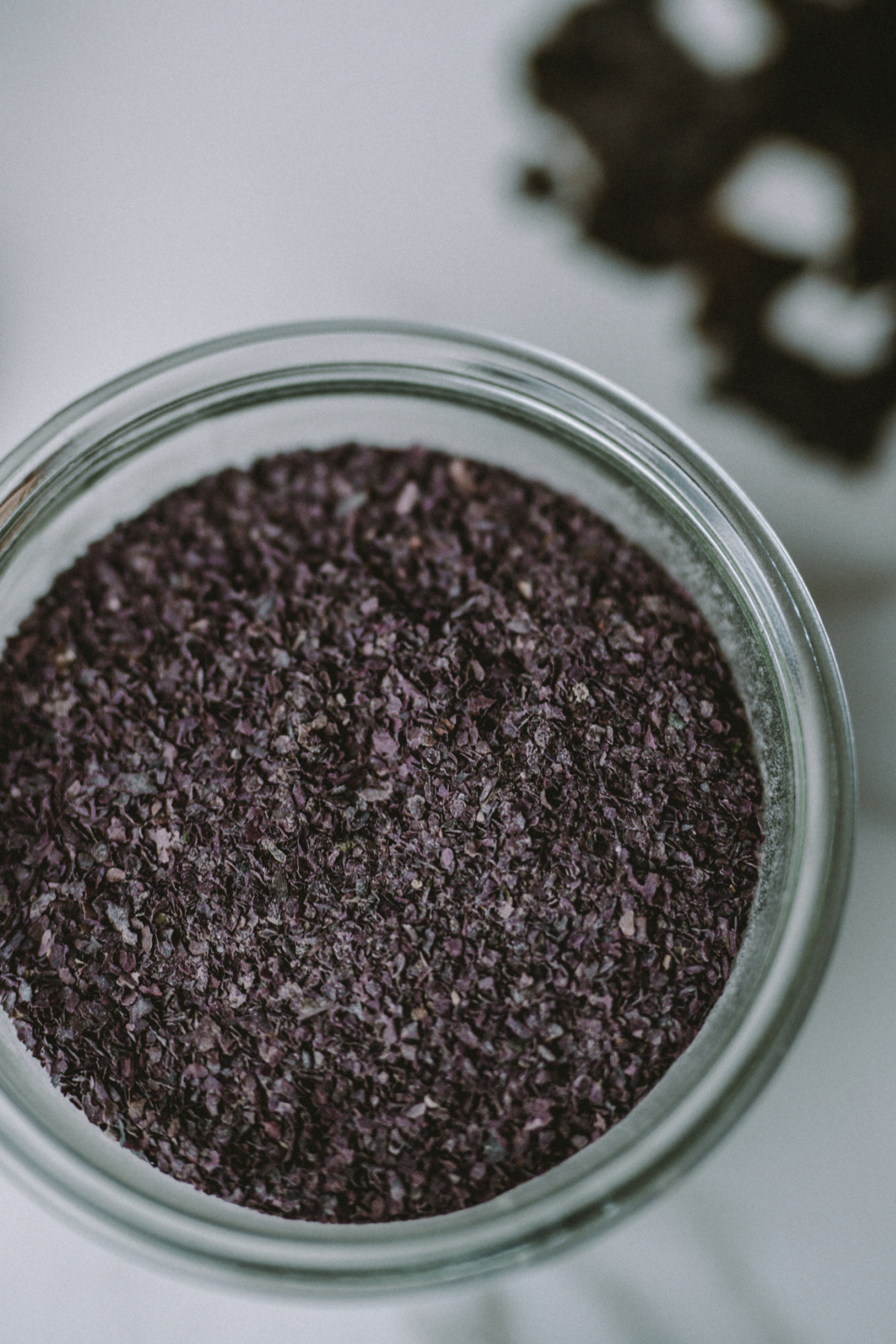
Seaweed, like Dulse (Palmaria palmata), Kombu (Saccharina japonica), Wakame (Undaria pinnatifida), Nori (Porphyra umbilicalis)…
Seaweeds contain all of the essential minerals needed for healthy metabolic function and no land plant comes even remotely close in comparison (Bergner, 1997).
Some of the key minerals and elements that are abundant in seaweeds include potassium, calcium, magnesium, zinc, copper, chloride, sulfur, iron, manganese, phosphorus, sodium, selenium, and iodine.
(Safety: Note that some individuals, especially those with thyroid disease and seafood allergies, are extremely sensitive to iodine and their intake of seaweed and other iodine-rich foods or supplements should be monitored closely (Drum, 2008).)
Immune Modulators
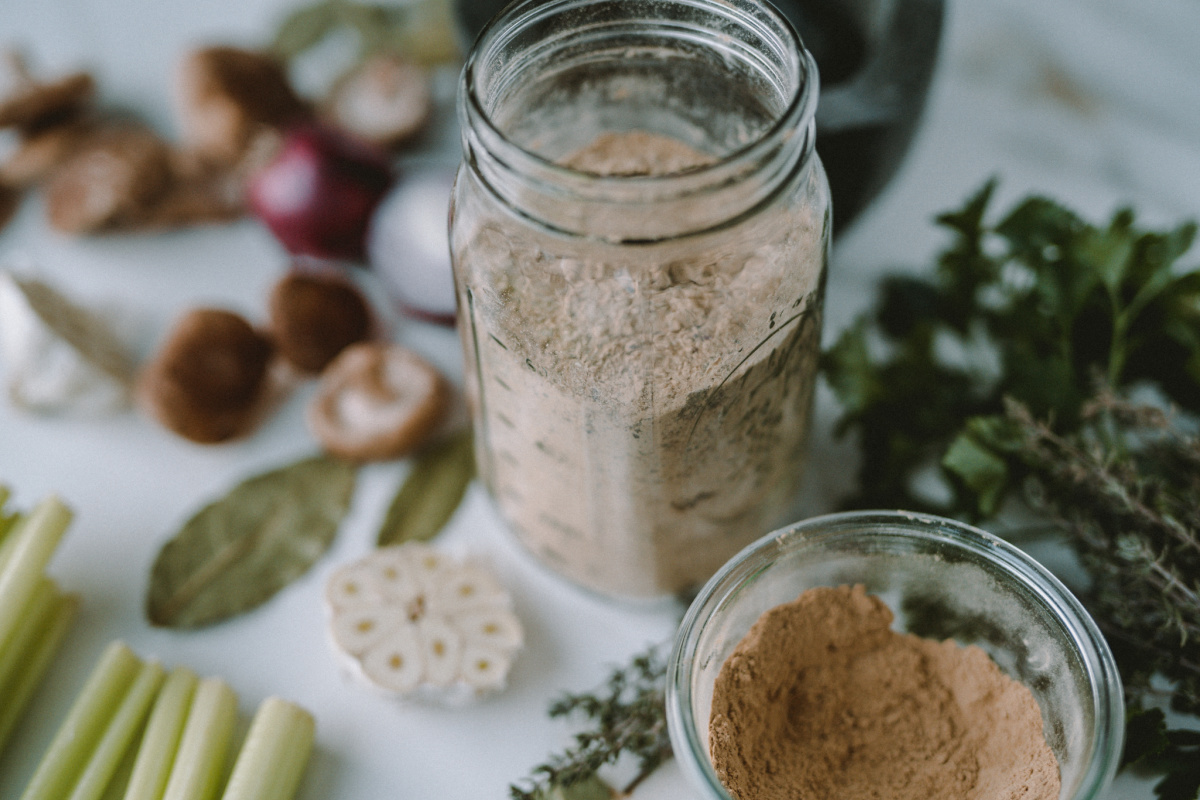
Astragalus – Astragalus propinquus
This traditional Chinese herb promotes the long-term strengthening of the immune system (Winston, 2007) and can protect against viral infections.
The polysaccharides in the astragalus support and stimulate the immune system via several mechanisms. Research indicates that astragalus increases the production of white blood cells (Xiao et al., 2013), antibodies, and interferon, which signals white blood cells to multiply or fight infection (Foster & Johnson, 2006; Liu & Lv, 2020 ). It is used for rebuilding the immune system after an illness or long-term stress and helps those in weak, depleted states regain strength and vitality (Masé, 2013).
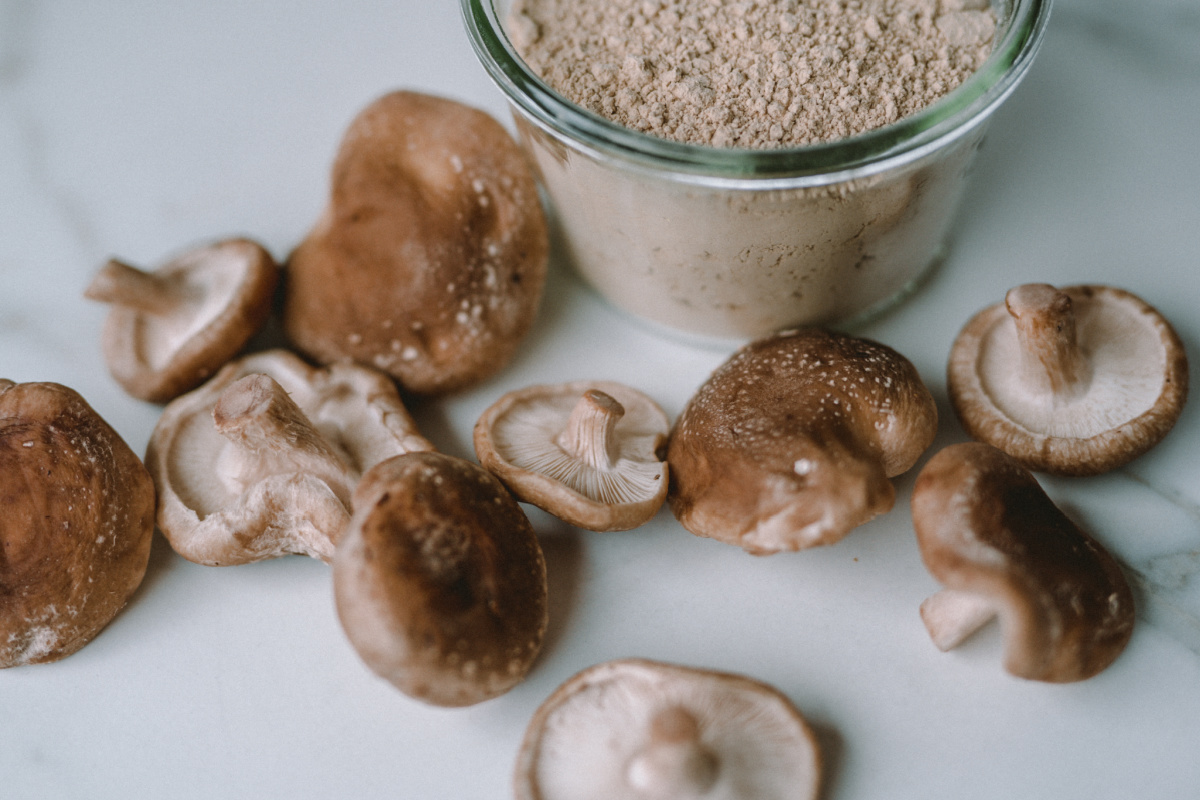
Shiitake – Lentinula edodes
Just like other medicinal mushrooms, Shiitake assist the immune system in a number of ways. Research indicates that shiitake extract has antitumor and antiviral properties (Hobbs, 1986). Also, they may help lower heightened blood pressure and cholesterol levels, improve liver function, and simulate killer-T cells, an important aspect of the immune response (Hobbs, 1986).
Antimicrobials
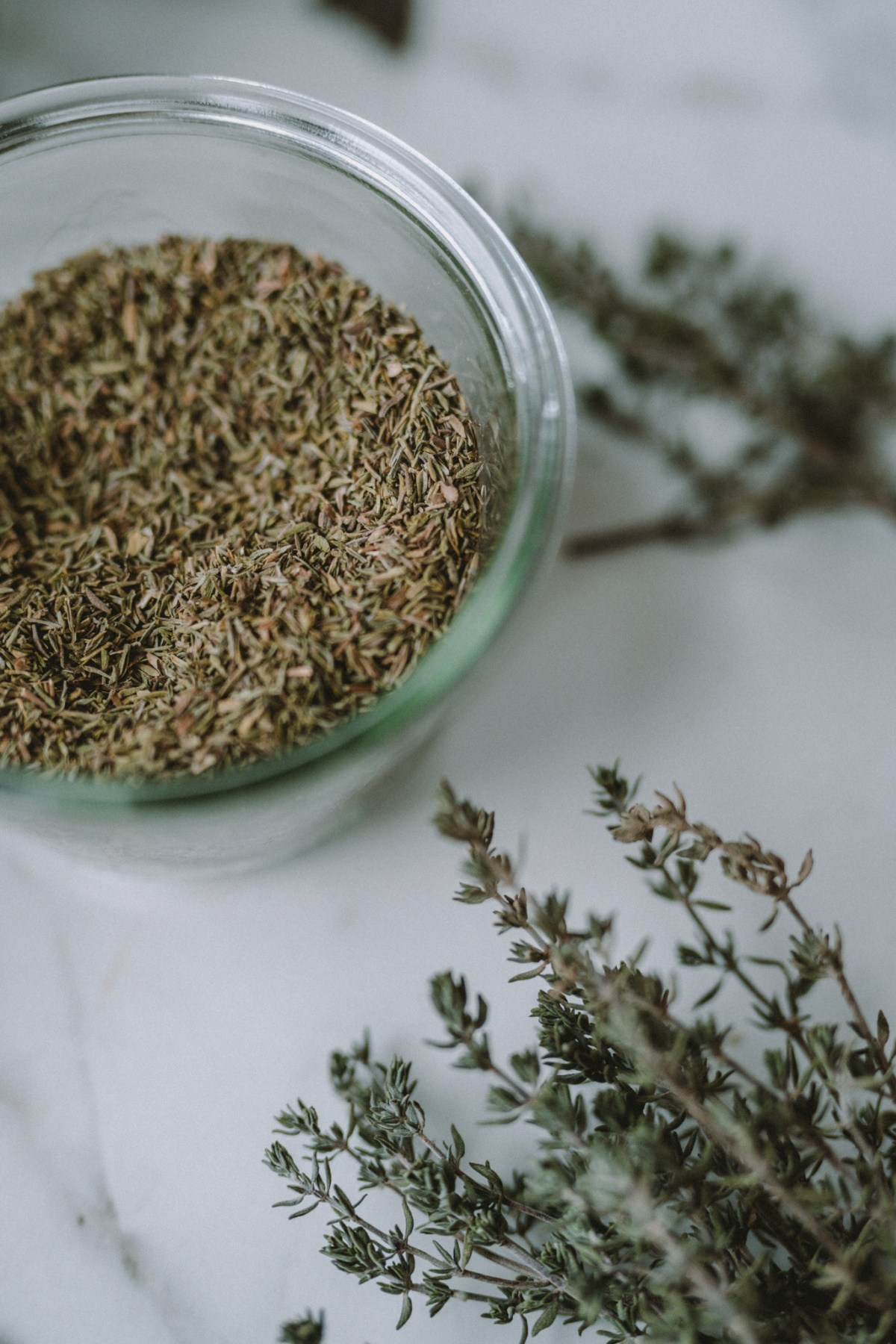
Thyme – Thymus vulgaris
This wonderful herb can be used for a variety of ailments, particularly upper respiratory infections. It has antimicrobial, antiviral, expectorant, anticatarrhal, and lung protective qualities and is often used to resolve ailments like the common cold and the flu. No other aspect of thyme has been so highly studied by science as these protective antimicrobial actions have been. Thyme is also employed as an immunostimulant to help generally reduce infection (WRIH, n.d.)
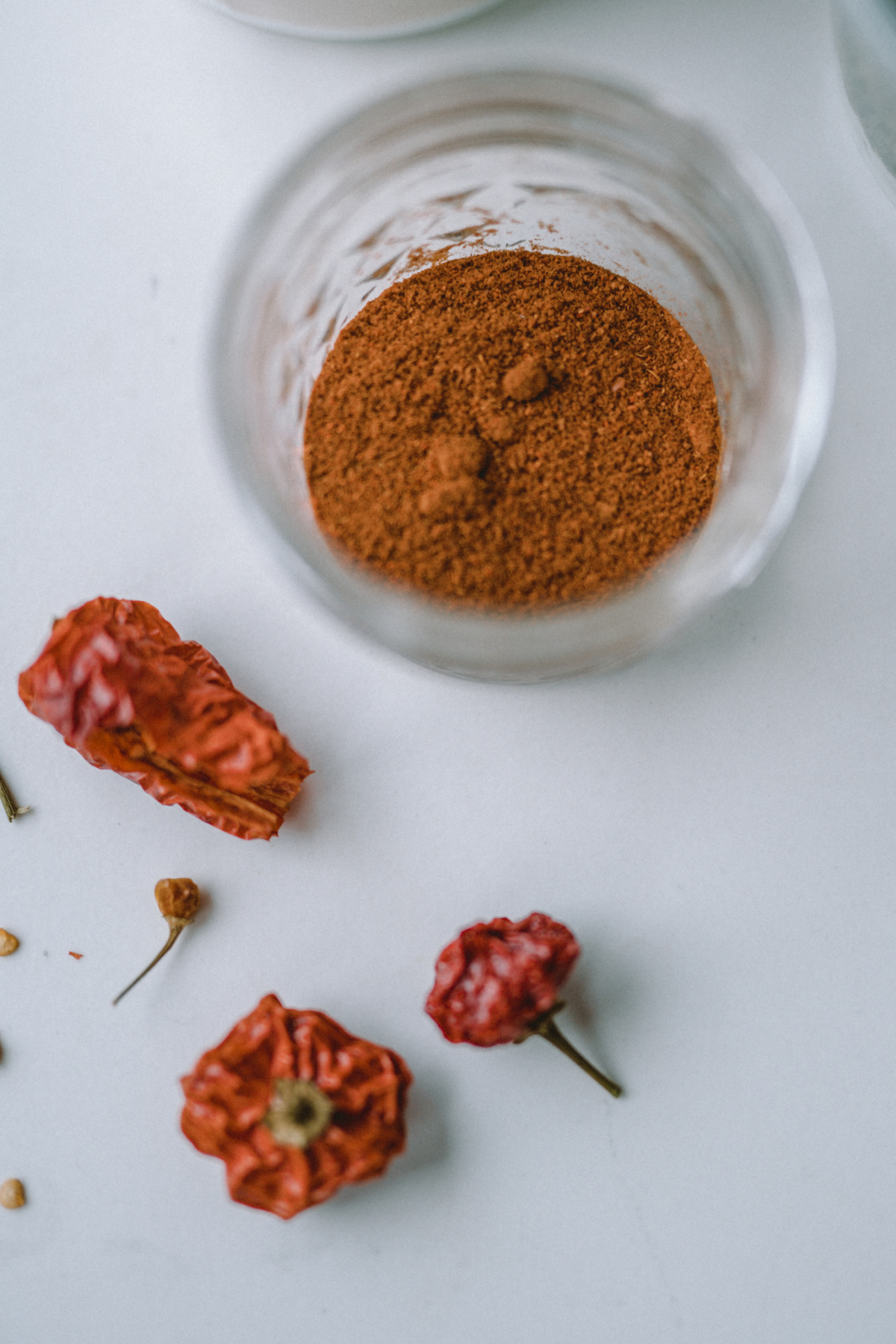
Cayenne – Capsicum annum
Cayenne can help prevent as well as shorten the duration of a cold or flu.
Traditional uses include applications for sore throats and cough, wounds, and immune modulation (Sanati, 2018).
Besides that, it brings heat to the body, which can be helpful in this cold season!
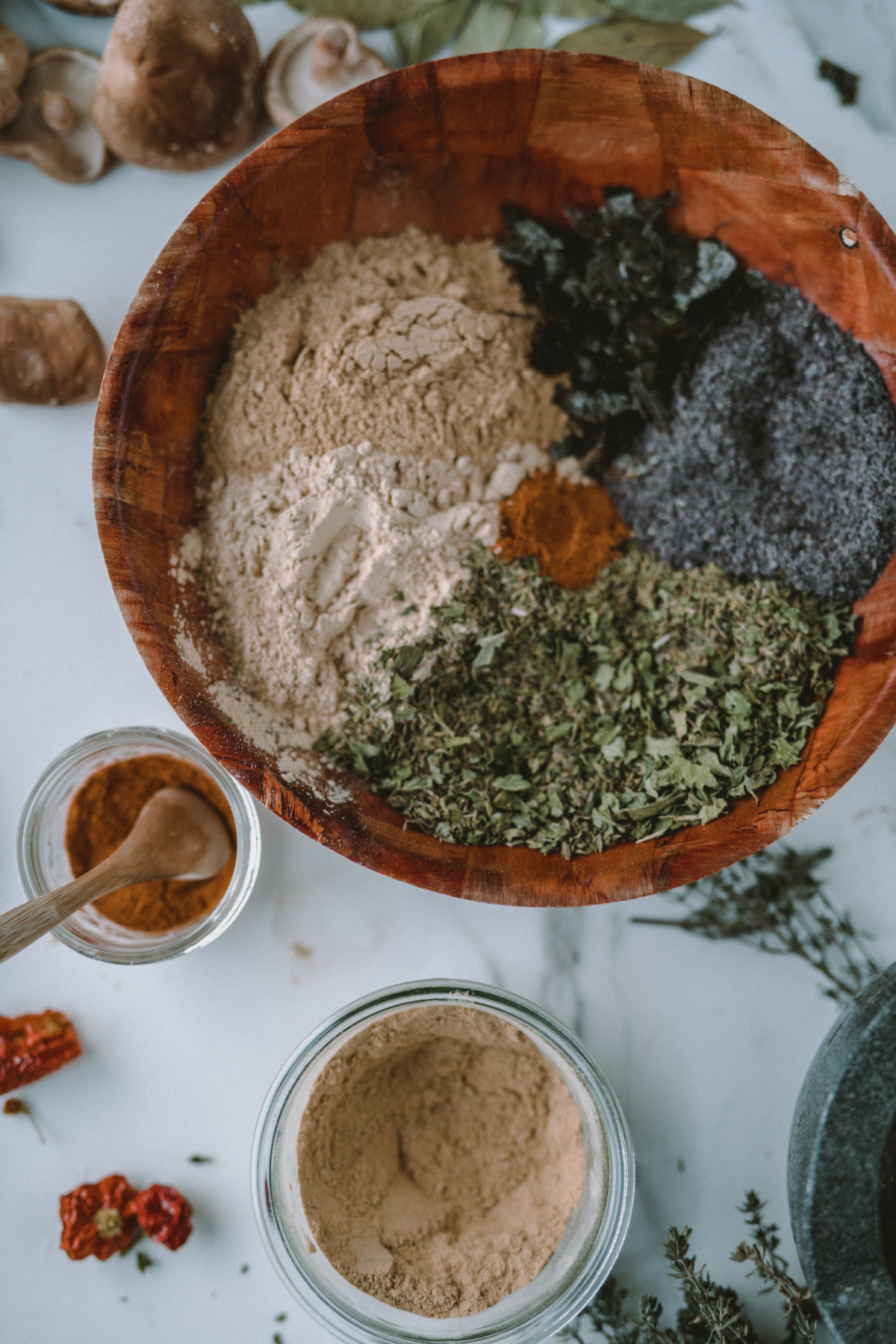
Nourishing Herbal Soup Seasoning Mix
When we are feeling under the weather, it can be challenging to keep up with cooking nourishing healthy meals. This immunity soup seasoning blend is perfect to use for boosting your simple soups. You can prepare it in bulk and have it on hand for months! 1 cup dried nettle (Urtica dioica) aerial part To Use: Simply add one or two tablespoons into your soup, stew, sauce, or any other cooked dish that you want to boost! Together with fresh veggies and herbs like carrots, celery, parsley, and garlic you will create a delicious and savory taste.
All you will need is some fresh ingredients from your local market and the following herbs.
Yield: 3.5 cups.
½ cup seaweed flakes (dulse, wakame, kombu, nori…
½ cup astragalus (Astragalus mongholicus) root powder
1 cup shiitake powder
½ cup dried thyme
1 teaspoon cayenne powder (or more if you like it spicy)
Staying healthy throughout the year
In these difficult times, it’s so important to provide your body some extra protection from viral illnesses and the effects. By incorporating herbs into your daily life — before, during, and after an illness — these can help to make you more comfortable and help support the body with prevention and recovery. Especially soups and stews are so wonderful for your overall wellbeing on these cold winter days!
See the two articles below for more herbal seasoning mix ideas:
3 Herbal Popcorn Seasoning Blends That Friends and Family Will Love
Homemade All-Purpose Seasoning
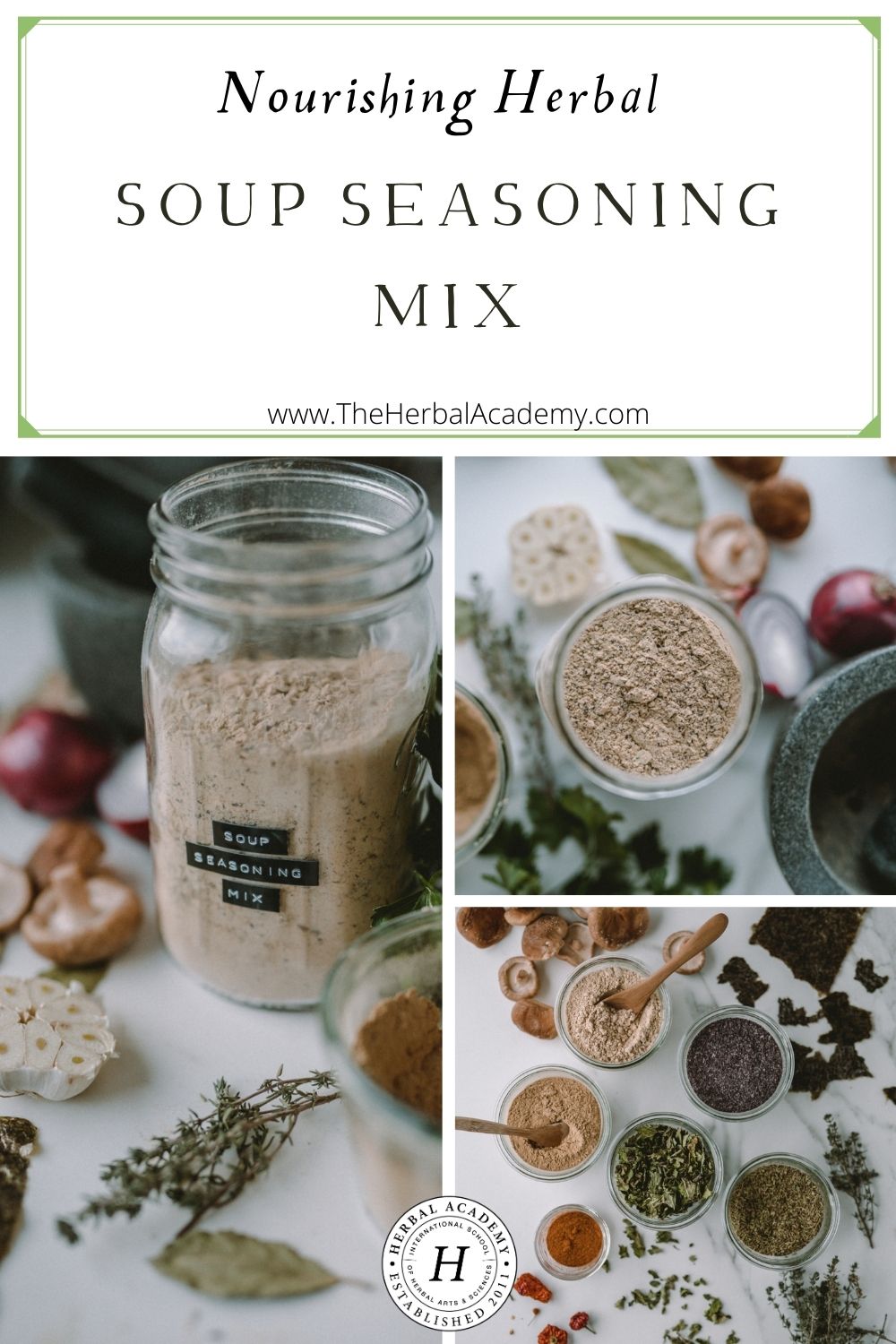
REFERENCES
Bennett, Robin Rose (2014). The Gift of Healing Herbs. Berkeley, CA: North Atlantic Books.
Bergner, P. (1997). The healing power of minerals, special nutrients, and trace elements. Placer County, CA: Prima Lifestyles Publishing.
Drum, R. (2008). Medicinal uses of seaweeds.
Retrieved from: http://www.ryandrum.com/seaweeds.htm
Foster, S., & Johnson, R. (2006). Desk reference to nature’s medicine. Washington, DC: National Geographic Society.
Hobbs, C. (1986). Medicinal mushrooms.
Retrieved from: https://www.christopherhobbs.com/library/featured-articles/mushroom-articles/
Liu, Y.-T., & Lv, W.-l. (2020). Research progress in Astragalus membranaceus and its active components on immune responses in liver fibrosis. Chinese Journal of Integrative Medicine, 26, 794–800. https://doi.org/10.1007/s11655-019-3039-1
Pedersen, M. (2012). Nutritional herbology: A reference guide to herbs. Warsaw, IN: Whitman Publications
Sanati, S., Razavi, B.M., Hosseinzadeh., H. (2018). A review of the effects of Capsicum annuum L. and its constituent, capsaicin, in metabolic syndrome. Iranian Journal of Basic Medical Sciences, 21(5):439-448. doi: 10.22038/IJBMS.2018.25200.6238.
Winston, D. (2007). Adaptogens: Herbs for strength, stamina, and stress relief. Rochester, VT: Healing Arts Press.
White Rabbit Institute of Healing. (n.d.). Thyme (bai li xiang).
Retrieved from https://www.whiterabbitinstituteofhealing.com/herbs/thyme/
Xiao, B., Xu, Y., He, H., Jiang, Q.L., Li, S.Y., Shu, H.Y., … Yang, M. (2013). [Anti-apoptotic effect of astragalus polysaccharide on myeloid cells]. Zhongguo Shi Yan Xue Ye Xue Za Zhi, 21(5), 1243–1247. https://doi.org/10.7534/j.issn.1009-2137.2013.05.032








